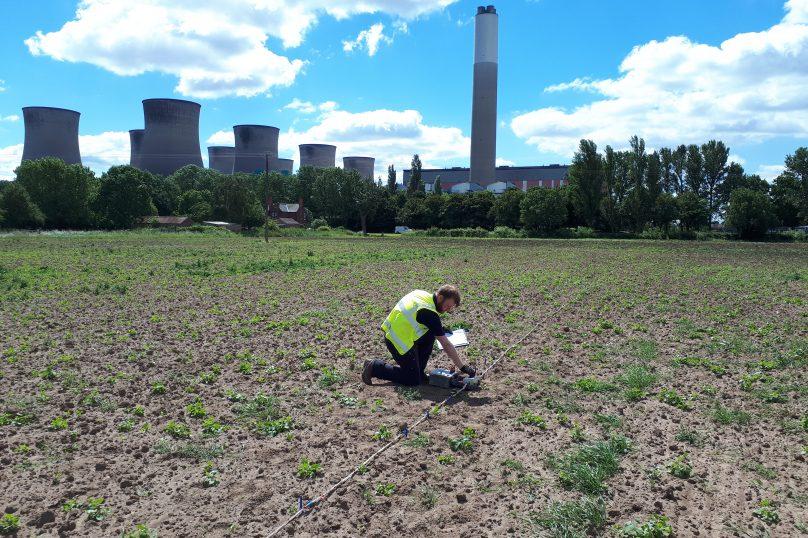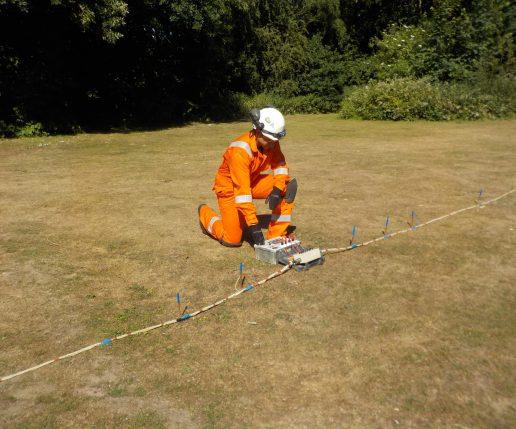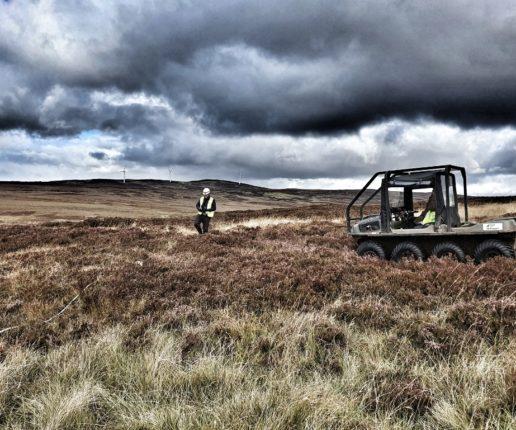Soundings are conducted using the Wenner method with spacings of up to 100m or more where necessary; that’s end-to-end test lead lengths of 300m or more. Whilst smaller spacing measurements may be adequate for the assessment of 11kV distribution earths or isolated lightning protection such as protection electrodes, these larger-spacing measurements are vital for the analysis of large-area sites such as:
- Substations
- Power Stations
- Railways
- Solar Parks
- Wind Farms
The use of only small-spacing measurements for large sites invites error and uncertainty in the calculation of earth potential rise, touch and step voltages or third party interference.




